Abstract
To determine the prevalence of use of traditional health practices among different ethnic groups of Southeast Asian refugees after their arrival in the United States, we conducted a convenience sample of 80 Cambodian, Lao, Mien, and ethnic Chinese patients (20 each) attending the University of Washington Refugee Clinic for a new or follow-up visit. Interpreters administered a questionnaire that dealt with demographics, medical complaints, traditional health practices, health beliefs, and attitudes toward Western practitioners. In all, 46 (58%) patients had used one or more traditional health practices, but the prevalence varied by ethnic group. Coining and massage were used by all groups except the Mien, whereas moxibustion and healing ceremonies were performed almost exclusively by the Mien. Traditional health practices were used for a variety of symptoms and, in 78% of reported uses, patients reported alleviation of symptoms. The use of traditional health practices is common among Southeast Asian refugees. Clinicians who care for this population should be aware of these practices because they may supersede treatments prescribed by physicians or leave cutaneous stigmata that may be confused with disease or physical abuse. Good patient care may necessitate the use or tolerance of both Western and traditional modalities in many Southeast Asian refugees.
Full text
PDF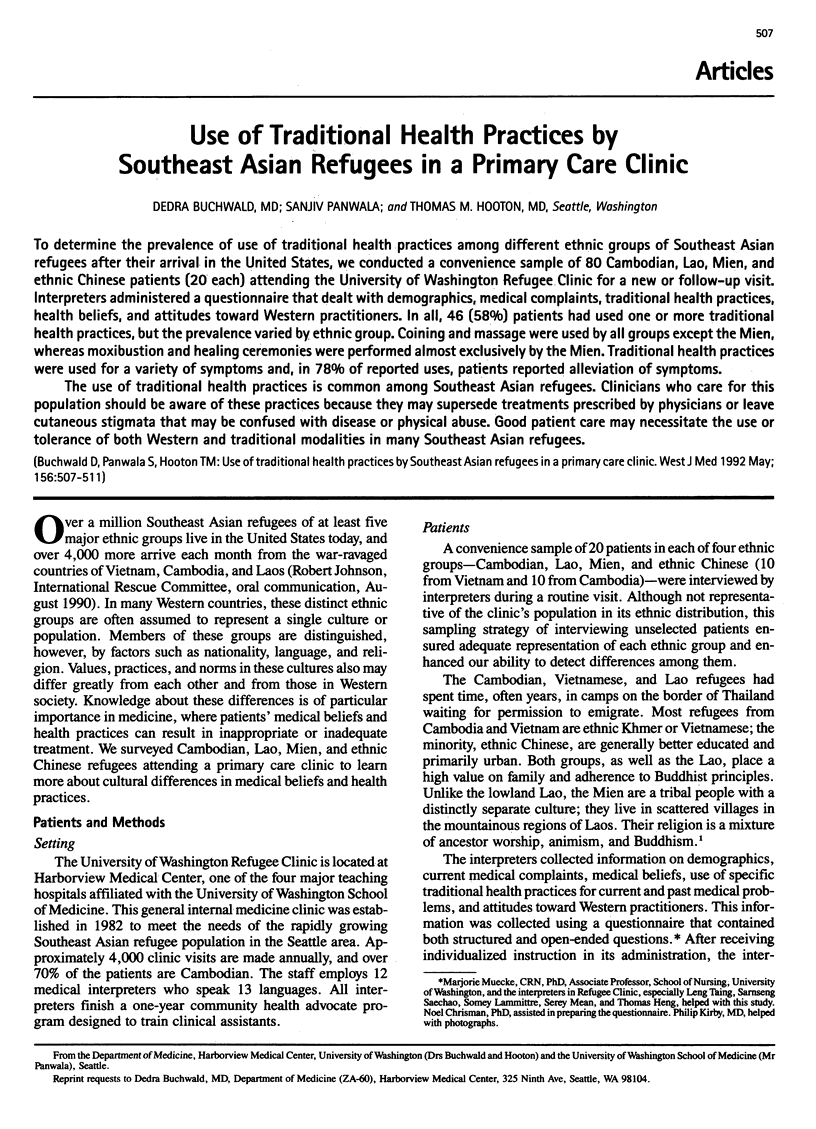
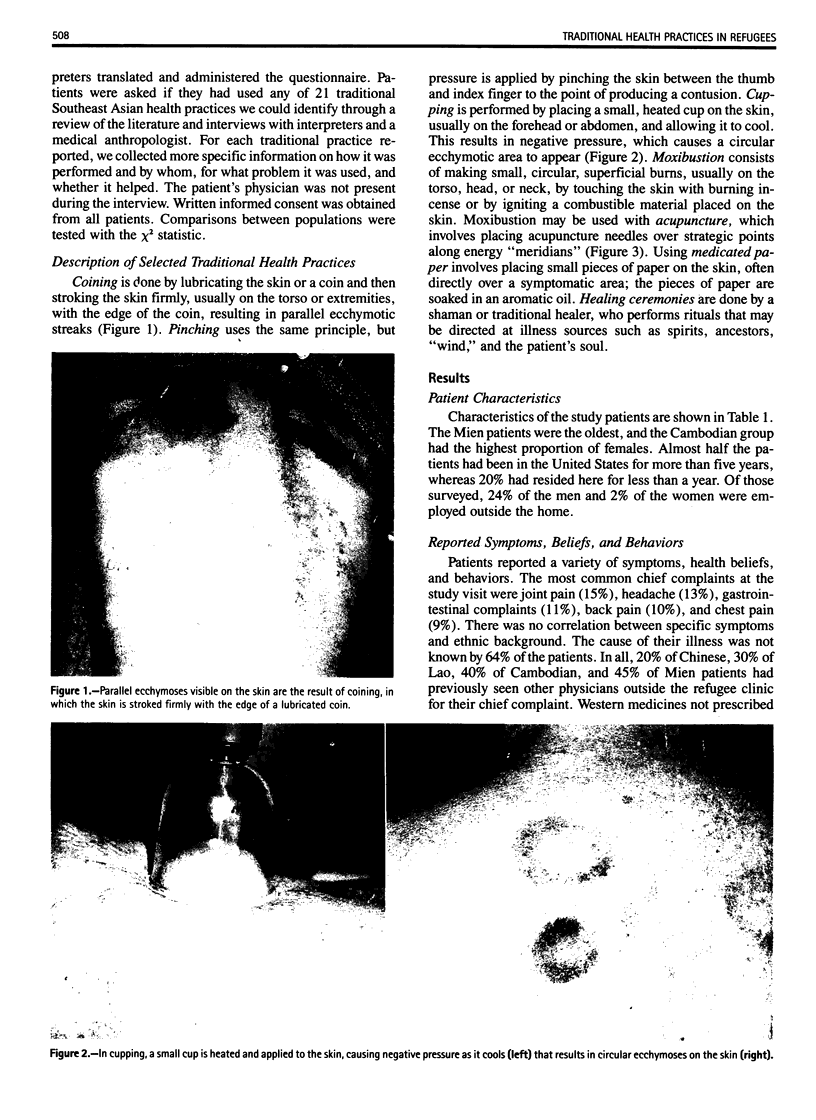
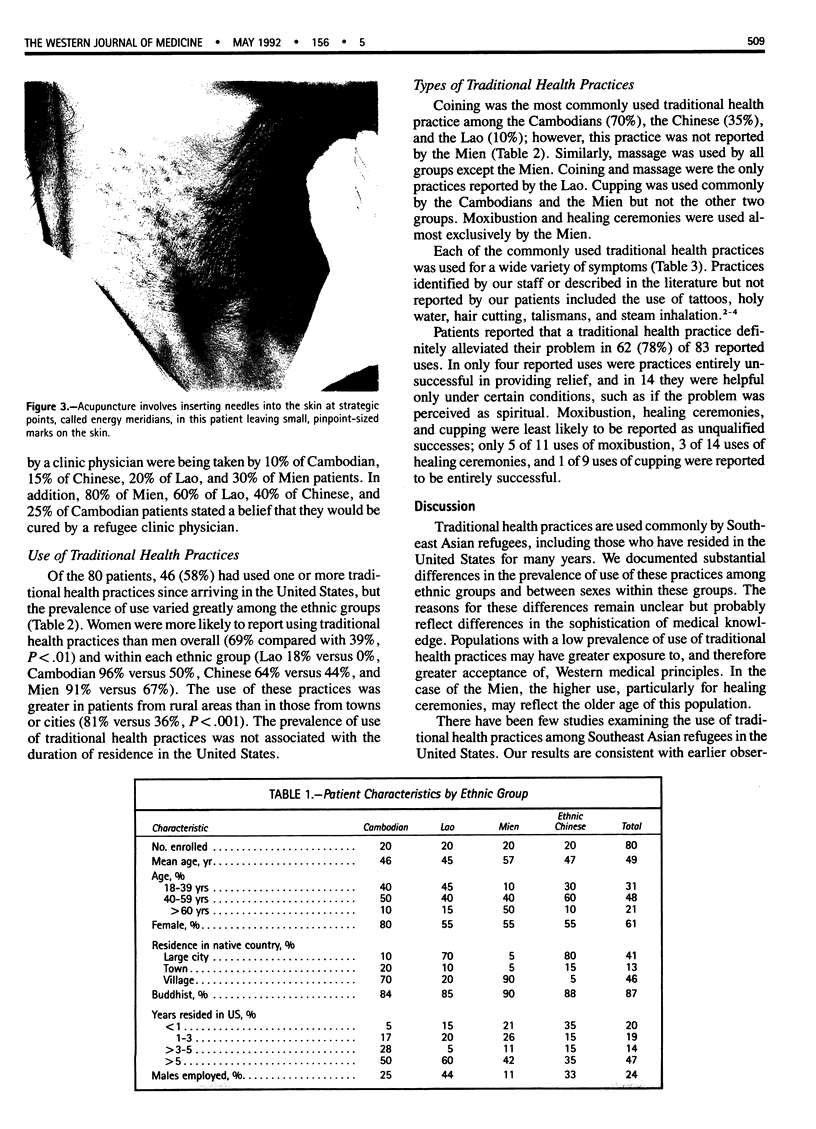
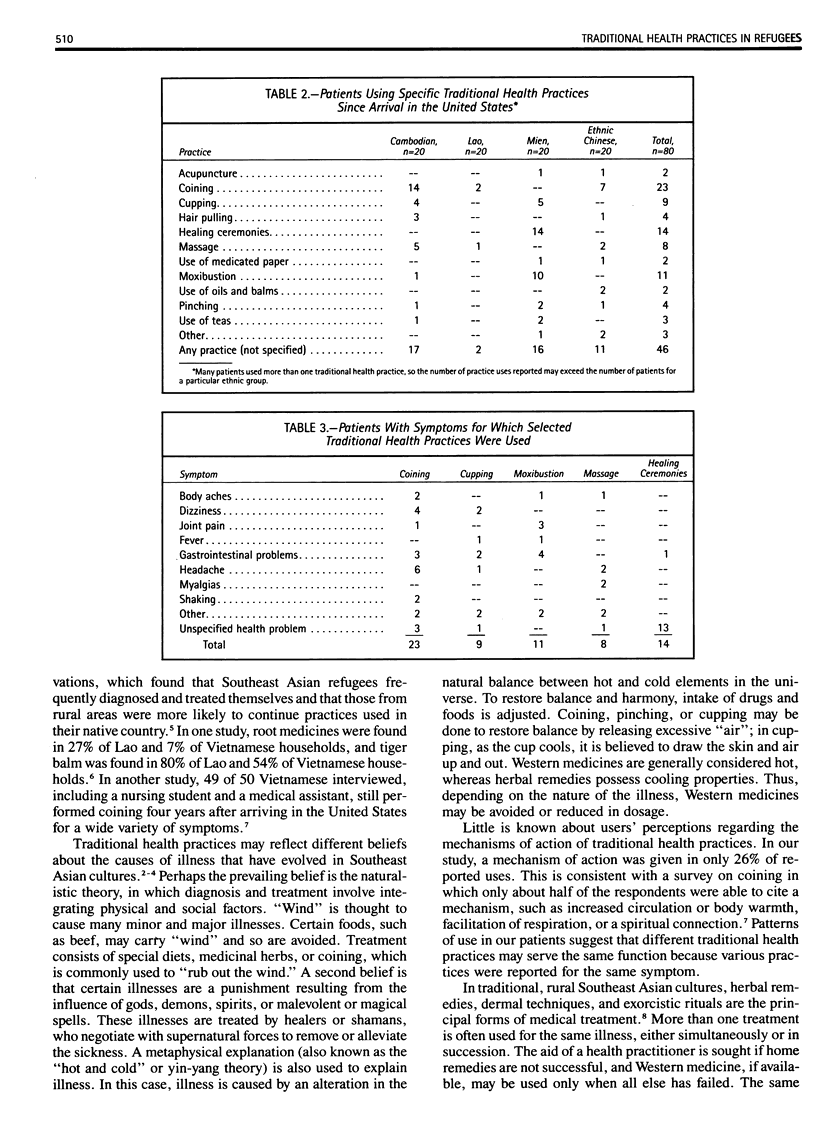
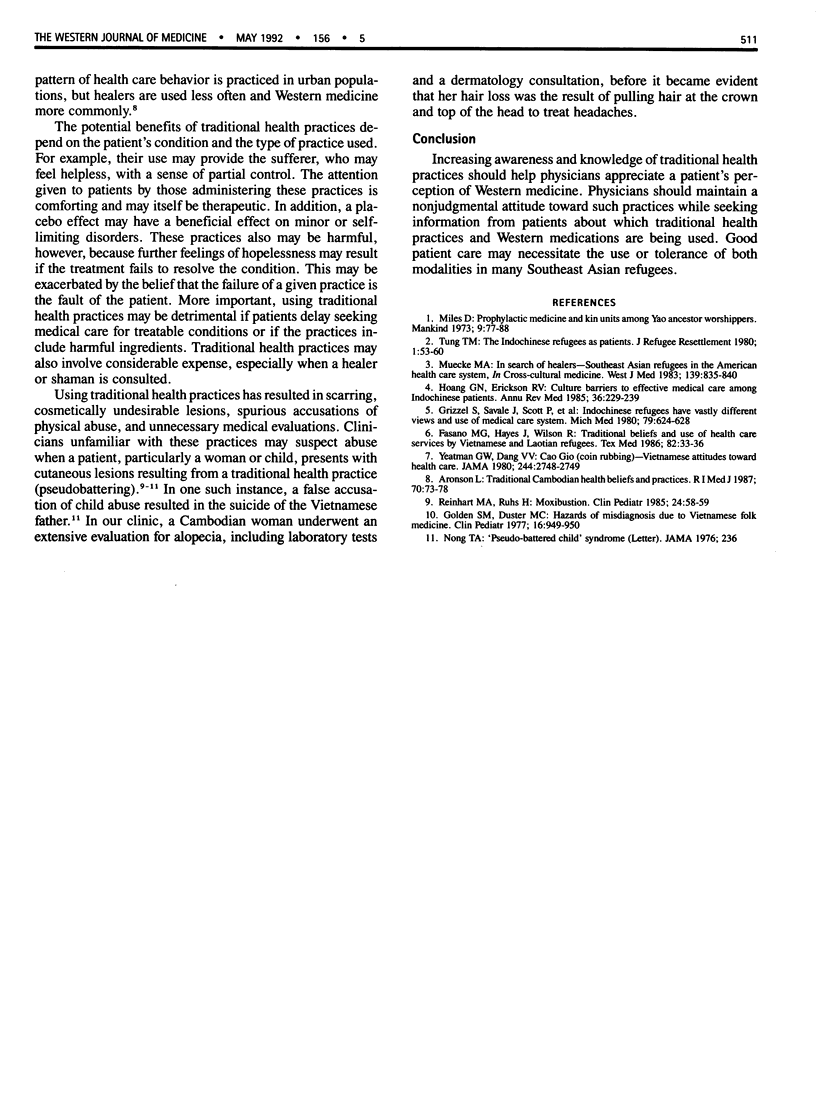
Images in this article
Selected References
These references are in PubMed. This may not be the complete list of references from this article.
- Aronson L. Traditional Cambodian health beliefs and practices. Understanding Cambodian traditions will facilitate their care in a Western setting. R I Med J. 1987 Feb;70(2):73–78. [PubMed] [Google Scholar]
- Fasano M. B., Hayes J., Wilson R. Traditional beliefs and use of health care services by Vietnamese and Laotian refugees. Tex Med. 1986 Aug;82(8):33–36. [PubMed] [Google Scholar]
- Golden S. M., Duster M. C. Hazards of misdiagnosis due to Vietnamese folk medicine. Clin Pediatr (Phila) 1977 Oct;16(10):949–950. doi: 10.1177/000992287701601013. [DOI] [PubMed] [Google Scholar]
- Grizzell S., Savale J., Scott P., Tuong N. Indochinese refugees have vastly different views and use of medical care system. Mich Med. 1980 Dec;79(35):624–628. [PubMed] [Google Scholar]
- Hoang G. N., Erickson R. V. Cultural barriers to effective medical care among Indochinese patients. Annu Rev Med. 1985;36:229–239. doi: 10.1146/annurev.me.36.020185.001305. [DOI] [PubMed] [Google Scholar]
- Muecke M. A. In search of healers--Southeast Asian refugees in the American health care system. West J Med. 1983 Dec;139(6):835–840. [PMC free article] [PubMed] [Google Scholar]
- Reinhart M. A., Ruhs H. Moxibustion. Another traumatic folk remedy. Clin Pediatr (Phila) 1985 Jan;24(1):58–59. doi: 10.1177/000992288502400113. [DOI] [PubMed] [Google Scholar]
- Yeatman G. W., Dang V. V. Cao Gío (coin rubbing). Vietnamese attitudes toward health care. JAMA. 1980 Dec 19;244(24):2748–2749. doi: 10.1001/jama.244.24.2748. [DOI] [PubMed] [Google Scholar]





